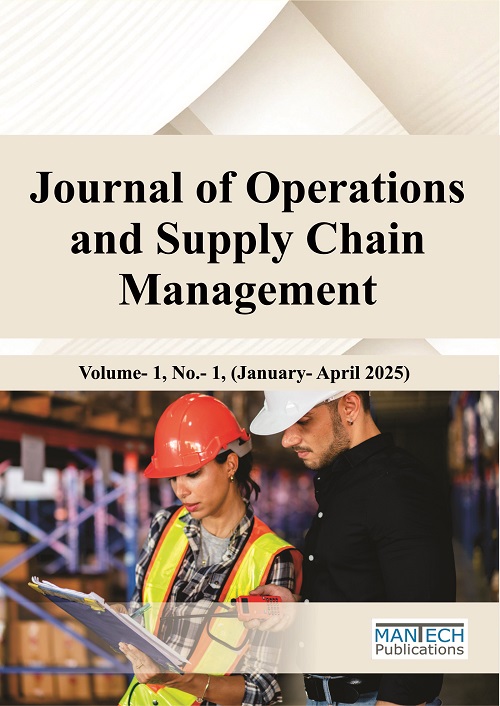Research paper writing can feel like standing at the base of a mountain, looking up at a peak that seems impossible to reach. The good news is, with the right strategies and a clear roadmap, even the most challenging research project becomes manageable—and even enjoyable. If you’ve ever stared at a blank page wondering how to make your work stand out, this guide is for you. We’ll walk through practical, easy-to-follow tips that take you from your first draft to a polished, high-impact research paper.
Whether you’re a college student aiming to impress your professor or preparing for a conference, these insights will help you organize your ideas, strengthen your argument, and write with confidence.

Understanding the Foundation: What Makes a Paper High-Impact?
Before we jump into the steps, let’s answer an important question: what exactly makes a research paper “high-impact”?
A high-impact paper isn’t just long or filled with complicated words. It’s a paper that:
- Clearly communicates its ideas.
- Adds value to its field of study.
- Engages the reader from the first sentence.
- Is structured logically and consistently.
Think of it like this: your research is the story, and your paper is the way you tell that story. Even groundbreaking research can go unnoticed if it’s poorly organized or hard to follow.
So, the goal of high impact research paper writing is not to impress with jargon but to convey ideas in a way that’s clear, compelling, and memorable.
Step 1: Start with a Clear Research Question
Have you ever tried baking a cake without a recipe? That’s what writing without a research question feels like. Your research question is your blueprint—it guides your entire paper.
Ask yourself:
- What problem am I trying to solve?
- Why does this question matter to my field?
- Can my question be answered through research and evidence?
A focused question narrows your scope and makes your writing more targeted. Avoid vague questions like, “What is climate change?” Instead, aim for something precise, such as, “How does urban pollution affect respiratory health in teenagers?”
Step 2: Gather Reliable and Relevant Sources
Now that you have your question, it’s time to collect evidence. A research paper is only as strong as the sources backing it up.
Here’s a quick checklist for smart source-gathering:
- Use peer-reviewed journals and reputable publications.
- Take notes while reading, highlighting key points that relate directly to your question.
- Keep track of citations from the start—this saves a headache later.
Ask yourself while reading: “Does this directly support my argument?” If it doesn’t, save it for later or leave it out. Quality matters more than quantity.

Step 3: Create a Logical Structure
Even if your ideas are brilliant, a messy structure can confuse readers. A strong research paper usually follows a clear framework:
- Introduction: Hook the reader and present your research question.
- Literature Review: Summarize existing work and identify gaps.
- Methodology: Explain how you conducted your research.
- Results: Present your findings clearly.
- Discussion: Analyze what your results mean and their implications.
- Conclusion: Summarize your main points and suggest future research.
Think of each section as a chapter in your story. Every part should flow naturally into the next, guiding your reader effortlessly.
Step 4: Write with Clarity and Precision
Here’s where many students struggle. It’s tempting to use complex words to sound “academic,” but clarity always wins.
- Use short sentences where possible.
- Avoid jargon unless necessary, and explain it when you do.
- Stick to active voice—it’s more direct and engaging.
- Each paragraph should have a single main idea.
Ask yourself after writing a paragraph: “Would someone unfamiliar with my topic understand this?” If not, simplify.
Step 5: Engage Your Reader
Yes, research papers can be exciting! You just need to approach them like storytelling:
- Start with an interesting fact or statistic in your introduction.
- Use examples to illustrate complex points.
- Pose questions to make readers think: “Why does this matter?”
Even in academic writing, a little personality and curiosity go a long way.
Step 6: Master the Art of Editing and Revising
Writing the first draft is only half the battle. Editing transforms your paper from “just okay” to high-impact.
Here’s how to approach it:
- Take a Break: After finishing your draft, step away for a day or two. Fresh eyes catch mistakes faster.
- Check for Flow: Does each paragraph transition smoothly to the next? Is your argument easy to follow?
- Eliminate Redundancy: Remove repeated points or unnecessary filler. Every word should have a purpose.
- Refine Your Language: Replace vague words with precise terms. For example, instead of “many studies show,” say “five peer-reviewed studies indicate.”
- Read Aloud: This helps you catch awkward phrasing or run-on sentences that you might miss when reading silently.
Even minor tweaks can dramatically improve clarity and impact.
Step 7: Cite Sources Correctly
Nothing damages credibility faster than sloppy citations. Proper references not only give credit but also strengthen your arguments.
- Use the citation style recommended by your professor (APA, MLA, Chicago, etc.).
- Keep a running bibliography from the start. Don’t wait until the end to format your sources.
- Double-check every citation for accuracy—author names, dates, page numbers.
Pro tip: Reference management tools like Zotero, EndNote, or Mendeley can save time and keep everything organized.
Step 8: Avoid Common Mistakes Students Make
Even experienced writers stumble on certain issues. Here are pitfalls to watch out for:
- Writing Without a Clear Thesis: Without a central argument, your paper can feel scattered.
- Overloading with Information: Including every single fact can overwhelm readers. Focus on what truly supports your argument.
- Ignoring Instructions: Following formatting and length requirements is crucial. Professors notice when students don’t.
- Neglecting Proofreading: Spelling and grammar mistakes can undermine your credibility.
Ask yourself: “Would I be convinced if I were reading this as a peer or professor?” If the answer is no, revisit your draft.
Step 9: Make Your Paper Visually Reader-Friendly
Formatting isn’t just about looking good—it makes your work more readable.
- Use headings and subheadings to break up large blocks of text.
- Include tables, charts, or graphs to illustrate complex data.
- Stick to consistent fonts, margins, and spacing.
- Highlight key points with bullet lists or bold text sparingly.
A paper that’s easy on the eyes encourages readers to engage with your ideas.

Step 10: Seek Feedback
Even the best writers benefit from feedback.
- Ask a peer, mentor, or tutor to read your draft.
- Listen with an open mind; constructive criticism can reveal blind spots.
- Revise based on the feedback and don’t be afraid to make significant changes if needed.
Remember, writing a high-impact research paper is not a solo journey. Fresh perspectives can elevate your work.
Step 11: Practice Makes Perfect
Here’s the truth: nobody becomes a master researcher overnight. The more papers you write, the easier it becomes to organize thoughts, express ideas clearly, and create compelling arguments.
- Start small: practice writing concise summaries of articles.
- Review published papers in your field and analyze what makes them effective.
- Track your progress—compare your first drafts to your latest ones to see improvement.
Every paper you write brings you closer to effortless high impact research paper writing.
Step 12: Polish Your Writing to Perfection
Even after multiple edits, a final polish can make your paper stand out. Here’s what to focus on:
- Consistency: Check headings, subheadings, tense, and formatting. Inconsistent style can distract readers.
- Conciseness: Remove unnecessary words or filler sentences. Clear writing feels confident and professional.
- Smooth Transitions: Ensure paragraphs flow naturally. Words like “however,” “furthermore,” or “in contrast” help guide readers.
- Powerful Opening and Closing: Start with a strong introduction that hooks your reader, and end with a conclusion that leaves a lasting impression.
Think of polishing as giving your paper a “final shine.” Even small tweaks can create a professional, high-quality impression.
Step 13: Maintain Originality
Original ideas are the heart of a high-impact research paper. Avoid plagiarism and show your unique perspective:
- Paraphrase effectively and cite sources when necessary.
- Combine insights from multiple studies to form your own conclusions.
- Include your interpretation, analysis, or critique rather than just summarizing other work.
Ask yourself: “Am I adding something new or just repeating what’s already out there?” A paper that contributes original thought naturally captures attention.
Step 14: Use Technology to Your Advantage
Several tools can improve your writing and workflow:
- Grammar and Style Checkers: Tools like Grammarly or Hemingway help refine language.
- Plagiarism Checkers: Turnitin or Copyscape ensure originality.
- Reference Managers: Zotero, Mendeley, or EndNote keep your citations organized.
- Mind Mapping Apps: Tools like MindMeister help structure ideas before writing.
These tools don’t replace critical thinking—they simply make your writing process smoother and more accurate.
Step 15: Keep Your Audience in Mind
Remember, your paper isn’t just for you—it’s for your readers. Ask yourself:
- Who will read this? Professors, peers, or a wider academic audience?
- What questions might they have?
- Does my paper answer those questions clearly?
Writing with your audience in mind ensures your paper communicates effectively, leaving a lasting impression.
Final Tips for High-Impact Research Paper Writing
- Start Early: Avoid last-minute stress. More time means better research and revisions.
- Stay Organized: Keep notes, outlines, and sources tidy. Chaos in your materials often shows in your writing.
- Set Milestones: Break your writing process into steps—research, drafting, editing, and final review.
- Be Confident: Trust your analysis and perspective. Confidence in writing makes your argument persuasive.
- Learn from Feedback: Every critique is an opportunity to improve. Incorporate lessons in your next paper.
Conclusion
Writing a high-impact research paper doesn’t have to feel impossible. By focusing on a clear research question, gathering credible sources, structuring your paper logically, and refining your language, you can produce work that stands out. Remember to edit thoroughly, maintain originality, and engage your audience as if you’re speaking directly to them.
The key is consistent practice and thoughtful effort. Each paper you write teaches you something new about research, analysis, and effective communication. Follow these strategies, and your research won’t just exist—it will leave a mark.
So, take a deep breath, start writing, and enjoy the journey of creating a paper that truly makes an impact.
FAQs:
1. What is the difference between a regular research paper and a high-impact research paper?
A high-impact research paper not only presents findings but does so in a clear, engaging, and original way. It adds value to the field, is well-structured, and communicates ideas effectively.
2. How long should a high-impact research paper be?
Length depends on your assignment or publication, but focus more on quality than quantity. A concise, well-organized paper often leaves a stronger impression than a long, wordy one.
3. Can I use online sources for my research?
Yes, but only credible and reliable sources, such as peer-reviewed journals, academic databases, and trusted publications. Avoid unverified blogs or wiki articles for key arguments.
4. How do I make my research paper engaging for readers?
Use clear language, logical flow, examples, and questions that spark curiosity. Avoid dense, overly technical writing unless necessary.
5. How important is feedback in writing a research paper?
Feedback is crucial. It helps identify weak points, improve clarity, and refine arguments. Peer reviews or professor guidance can dramatically enhance the impact of your paper.










Leave a Reply